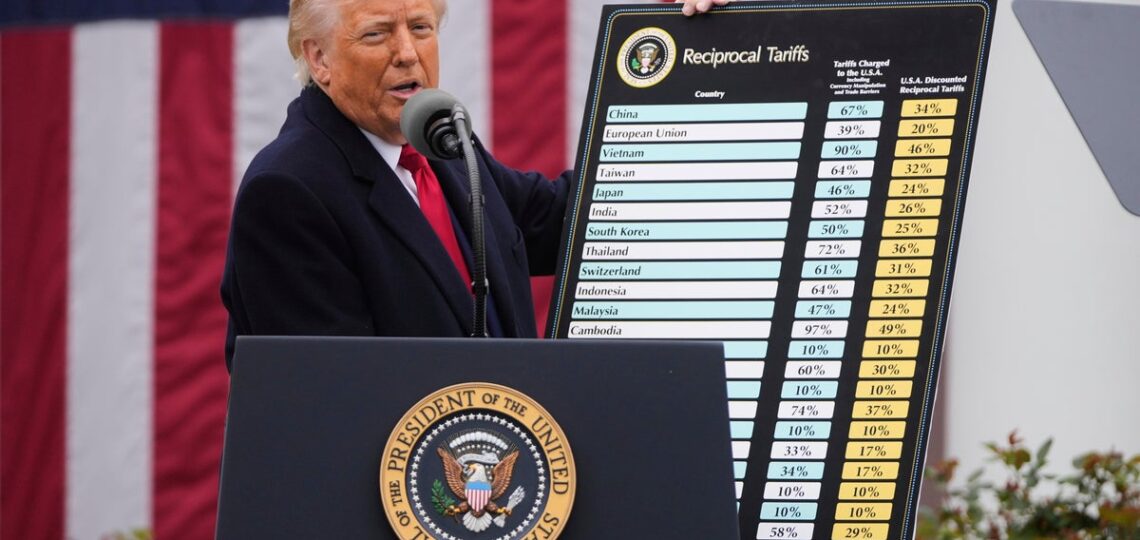
See the full list of reciprocal tariffs by country from Trump’s “Liberation Day” chart
President Trump on Wednesday, announced so-called reciprocal tariffs on imports from about 90 nations that are above a 10% across-the-board tax applied to all imports to the U.S. Describing the announcement as “Liberation Day,” the president said the new taxes are needed to erase a trade deficit between the U.S. and other countries, ranging from China to the European Union.
Some nations will face only the universal tariff of 10%, while imports from dozens of other countries will be charged a higher specific reciprocal import levy. For instance, Australian imports will face the baseline rate of 10%, while China will face a 34% tariff.
“Reciprocal. That means they do it to us, and we do it to them,” Mr. Trump said in his Wednesday remarks.
Asian nations will face the worst of the brunt, with Cambodia facing a tax rate at 49% and Vietnam at 46%, according to Nationwide Chief Economist Kathy Bostjancic. On top of China’s 34% reciprocal tariff, imports from that nation will also face previously announced 20% tariffs, bringing that nation’s total rate to more than 60%, she added.
Mr. Trump also said such levies will boost domestic manufacturing and level the playing field with other countries that impose higher tariffs on U.S. imports than the U.S. charges for their products. Still, economists are forecasting that the tariffs will cause inflation to reignite, while also prompting some trade partners to retaliate with higher tariffs on American imports to their nations.
If the tariffs are maintained by the Trump administration and if other nations impose retaliatory tariffs, both the U.S. and other countries “will suffer serious recessions,” said Mark Zandi, chief economist at Moody’s Analytics, in an email to CBS MoneyWatch.
Full list of Trump’s reciprocal tariffs by country
When will these tariffs go into effect?
The reciprocal rates will become effective at 12:01 a.m. on April 9. That’s in addition to a baseline 10% tariff which goes into effect at 12:01 a.m. on April 5.
How did the Trump administration decide what tariffs to charge which countries?
Mr. Trump said his administration determined the tariff rate for each country based on the monetary levies those nations charge on U.S. imports, as well as non-monetary trade barriers like regulations that make it tougher for American products to enter those markets.
The president added that the reciprocal tariffs are still only half the rates charged by those nations on U.S. products, characterizing his new levies as “kind.”